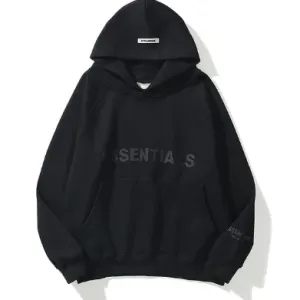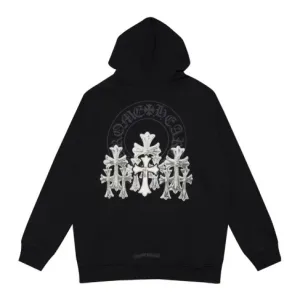Introduction to Comme des Garçons
Comme des Garçons is a revolutionary fashion label known for its avant-garde and unconventional designs. Founded in 1969 by Japanese designer Rei Kawakubo, the brand has continuously challenged traditional fashion norms, defying conventions of beauty, form, and structure. Over the decades, Comme des Garçons has become a powerful force in global fashion, not only for its designs but also for its influence on the broader fashion discourse. This article delves into the history, philosophy, design aesthetics, and cultural impact of Comme des Garçons
Rei Kawakubo: The Visionary Behind Comme des Garçons
Rei Kawakubo, the founder and creative genius behind Comme des Garçons, is one of the most influential designers in modern fashion history. Born in Tokyo in 1942, she did not initially pursue a career in fashion. Instead, Kawakubo studied art and literature at Keio University, and it was only after working in a textile company that she began her journey into the fashion world.
Kawakubo launched Comme des Garçons in 1969, initially starting as a small boutique that gained popularity for its minimalist and unconventional designs. Her work has been characterized by a deep sense of rebellion against fashion norms, whether in the form of asymmetrical silhouettes, deconstruction, or the use of unconventional fabrics. Kawakubo’s rejection of fashion’s traditional ideas has made her an icon, and the brand continues to operate as a reflection of her bold, artistic vision.
The Early Years and Rise to Prominence
Comme des Garçons first gained recognition in Japan before making its international debut in Paris in 1981. Kawakubo’s first Paris runway show shocked the fashion world, as her collection featured monochromatic pieces, largely in black, with torn fabrics, oversized proportions, and irregular forms. The audience had never seen anything like it.
This was a significant moment for the brand, as it set the tone for Comme des Garçons’ aesthetic: a challenge to the Western ideals of beauty and femininity. While critics initially described Kawakubo’s designs as “anti-fashion,” others hailed her as a trailblazer who was pushing the boundaries of what clothing could be.
The early 1980s were pivotal for Comme des Garçons, as the brand began to expand rapidly, not only in terms of recognition but also in market presence. Kawakubo’s fearless approach to fashion attracted a niche but loyal following, and the brand grew internationally.
Design Philosophy and Aesthetic
The aesthetic of Comme des Garçons is hard to define because it is always evolving, yet certain themes remain constant. Kawakubo’s designs often play with the idea of deconstruction, breaking down conventional garment structures and reimagining them. For instance, Comme des Garçons is known for garments that feature unconventional cuts, asymmetry, and oversized, bulky silhouettes. Kawakubo also experiments heavily with layering, texture, and fabric manipulation.
A key aspect of Comme des Garçons’ aesthetic is its intellectual and conceptual approach to fashion. Kawakubo often creates designs that seem to make a philosophical statement about the body, identity, and culture. Her pieces often look more like wearable art than traditional clothing, blurring the lines between fashion and sculpture.
Another recurring theme in Comme des Garçons’ designs is the use of black. Kawakubo once famously declared, “For me, black is a color.” Her use of black has been deeply symbolic, representing both rebellion and uniformity. Over time, other colors were introduced into her collections, but black has remained a cornerstone of the brand’s identity.
Challenging Gender Norms and Conventional Beauty
One of the most significant ways in which Comme des Garçons has impacted fashion is by challenging traditional ideas of gender and beauty. Many of Kawakubo’s designs are androgynous, rejecting the usual distinctions between men’s and women’s clothing. Her approach to gender is fluid, as she often uses the same fabrics, silhouettes, and styles in both her men’s and women’s collections.
Additionally, Kawakubo’s vision of beauty is radically different from the idealized versions often seen in the fashion industry. She rejects the notion that clothing should be flattering to the body or that it should conform to societal expectations. Her garments often obscure the human form, with oversized and exaggerated shapes that conceal the body rather than reveal it. In doing so, she presents an alternative vision of beauty—one that is not based on sexuality or physical attractiveness but on the creativity and expression of the individual wearing the clothes.
Comme des Garçons Homme and Other Lines
Comme des Garçons has developed several sub-labels that cater to different markets and aesthetics. The most notable is Comme des Garçons Homme, which was launched in the mid-1980s. Comme des Garçons Homme, along with Comme des Garçons Homme Plus, represents Kawakubo’s vision for men’s fashion, which is just as unconventional as her designs for women. The men’s collections often feature tailored pieces that are deconstructed or manipulated to challenge traditional suiting.
Other sub-lines, such as Comme des Garçons Play and Comme des Garçons Noir, have also gained significant attention. Comme des Garçons Play, in particular, has a more casual and accessible aesthetic compared to the high-concept mainline. It is best known for its iconic heart logo designed by artist Filip Pagowski. This line, with its graphic T-shirts and sneakers, has been embraced by a younger audience and has achieved a significant level of commercial success.
Cultural Impact and Collaborations
Comme des Garçons has had an enormous cultural impact beyond the world of fashion. Kawakubo’s work has been exhibited in art museums, and her influence has transcended into design, architecture, and pop culture. The Metropolitan Museum of Art in New York held a major retrospective in 2017 titled “Rei Kawakubo/Comme des Garçons: Art of the In-Between,” which showcased Kawakubo’s groundbreaking work.
One of the ways Kawakubo has kept the brand relevant is through a series of high-profile collaborations. Comme des Garçons has partnered with brands like Nike, Supreme, Converse, and Louis Vuitton, creating unique pieces that blend the brand’s avant-garde aesthetic with streetwear and luxury fashion. These collaborations have expanded Comme des Garçons’ reach and introduced the brand to new audiences.
Conclusion
Comme des Garçons has cemented its place in fashion history as a brand that consistently defies conventions and redefines the boundaries of fashion. Under the visionary leadership of Rei Kawakubo, the label has become synonymous with intellectual fashion, challenging the norms of beauty, gender, and garment construction. Kawakubo’s influence on fashion is immeasurable, and her ability to continuously innovate ensures that Comme des Garçons will remain a significant force in the fashion world for years to come







